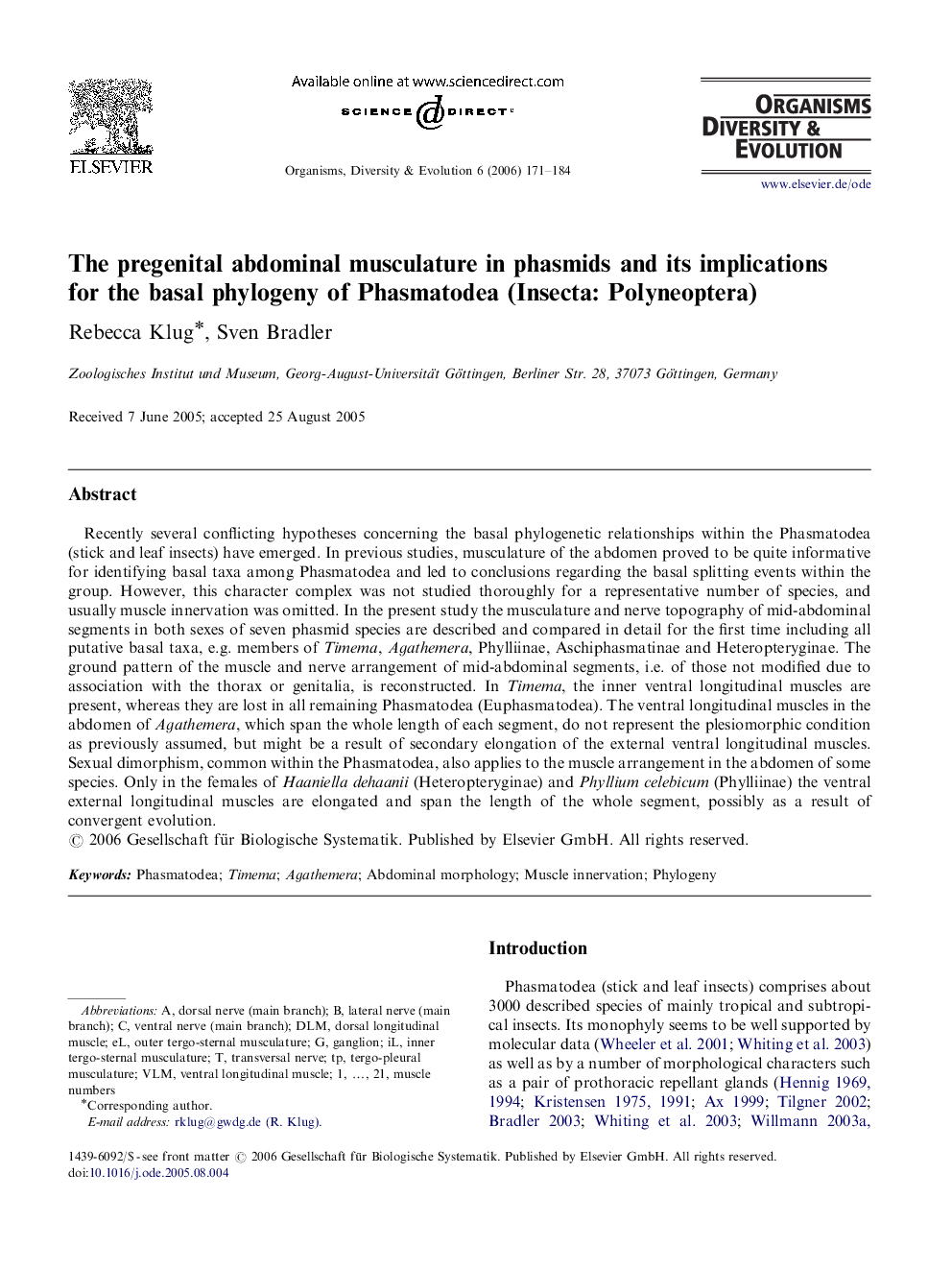| Article ID | Journal | Published Year | Pages | File Type |
|---|---|---|---|---|
| 4458743 | Organisms Diversity & Evolution | 2006 | 14 Pages |
Recently several conflicting hypotheses concerning the basal phylogenetic relationships within the Phasmatodea (stick and leaf insects) have emerged. In previous studies, musculature of the abdomen proved to be quite informative for identifying basal taxa among Phasmatodea and led to conclusions regarding the basal splitting events within the group. However, this character complex was not studied thoroughly for a representative number of species, and usually muscle innervation was omitted. In the present study the musculature and nerve topography of mid-abdominal segments in both sexes of seven phasmid species are described and compared in detail for the first time including all putative basal taxa, e.g. members of Timema, Agathemera, Phylliinae, Aschiphasmatinae and Heteropteryginae. The ground pattern of the muscle and nerve arrangement of mid-abdominal segments, i.e. of those not modified due to association with the thorax or genitalia, is reconstructed. In Timema, the inner ventral longitudinal muscles are present, whereas they are lost in all remaining Phasmatodea (Euphasmatodea). The ventral longitudinal muscles in the abdomen of Agathemera, which span the whole length of each segment, do not represent the plesiomorphic condition as previously assumed, but might be a result of secondary elongation of the external ventral longitudinal muscles. Sexual dimorphism, common within the Phasmatodea, also applies to the muscle arrangement in the abdomen of some species. Only in the females of Haaniella dehaanii (Heteropteryginae) and Phyllium celebicum (Phylliinae) the ventral external longitudinal muscles are elongated and span the length of the whole segment, possibly as a result of convergent evolution.
